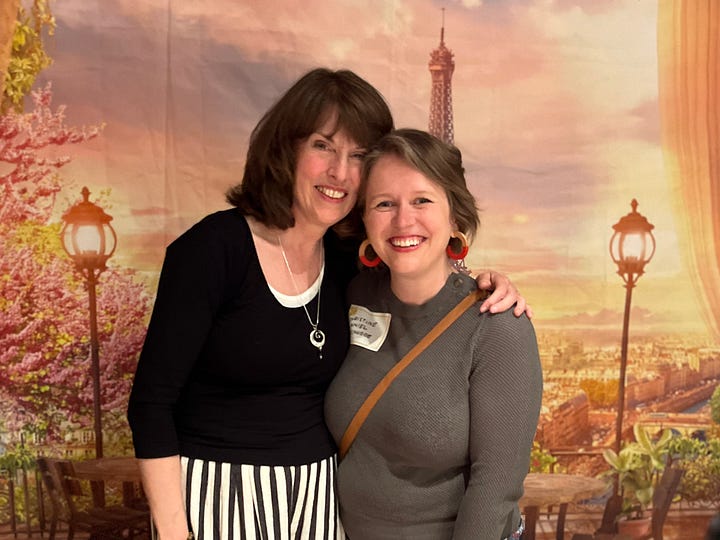
What do you do when a 104-year-old institution vacates 48 acres and 81 buildings in the middle of New York’s capital city?
I’m talking, of course, about the College of Saint Rose’s campus.
There are many ways this could go. A few weeks ago, Albany County Executive Dan McCoy announced an idea to form a local public authority that could purchase Saint Rose properties using money raised from issuing bonds. They’d call it the Albany County Pine Hills Land Authority. More here.
I love this.
Public authorities are quasi-governmental; they are created or sponsored by a governmental entity to further the public interest. From what I’ve read of the County Executive’s proposal, this public authority would be overseen by a board of County residents appointed by the Executive, the County Legislature and the City Mayor. Public authorities usually have to adhere to certain transparency and accountability guidelines like following New York’s Open Meetings law.

The goal wouldn’t be to own the properties forever, but to find appropriate buyers for them using a community-led, responsive framework. It might reduce some of the urgency to dispose of the properties. In my experience, when you can give yourself more time, you have a better shot at a more inclusive process and better outcomes. Plus, this path would remove the properties from the speculative market — which you know I love. A local public authority could set intentional disposition policies that would reduce wealth extraction from the community and stabilize against gentrification.
The County and community stakeholders could help steer the direction of development to meet our needs. We could prioritize affordable housing, green space, community facilities and whatever else we want.
Albany County would need approval from the New York State legislature to create this public authority. Legislative session ends June 4. It’s not the only path forward, but it sure seems like a good one. Can they get this done in time? I hope so.
Related

My mom, sister and I were together at the College’s 101st and final commencement ceremony on May 11, 2024. My dear mentor Joan Horgan delivered a beautiful and pitch perfect address to graduates. You can watch it here, if you’d like.


We also celebrated Joan’s 30 years of service to the College in a smaller gathering at Saint Roses’ Interfaith Sanctuary. After losing our beloved Ken Scott, it felt particularly special to honor and thank someone important to us like Joan. Why do we so often wait to say these things until someone has passed? Let’s celebrate people while they are here with us, too.


As long as I’m trying to manifest my campus ideas here, I would love to see the Interfaith Sanctuary on Madison Avenue to continue its legacy of holding space, hosting brave dialogue, offering a place for spiritual reflection and anchoring our community. It seems to me that this gorgeous building might live on as an independent institution, a center for people of all faiths and no faiths to gather together. It looks like this building is owned outright by the College, so I hope that gives them more flexibility in deciding what to do with it. I can’t count the number of meetings and parties and conversations and epiphanies I’ve had there, both during and well after my college years. For someone that doesn’t belong to a faith tradition, I’d say that makes the Interfaith Sanctuary pretty special.
The Office of Spiritual Life is located in the Interfaith Sanctuary, a safe place for people of all beliefs to feel welcome and at home. At Saint Rose, our roots have taught us that spirituality—in prayer and meditation, in personal development, in compassion, in acts of service and justice—enriches the college experience beyond measure. For that reason, the Office of Spiritual Life provides a wealth of programs, all designed to help you develop as a whole person, grow spiritually, foster your leadership potential, and see and serve the needs of others.
I don’t know the steps to make that happen, but let it be known that I will volunteer to chair the fundraising committee and operations committee and programming committee and do anything else I can to preserve this special place.
What ideas do you have for the future of Saint Rose’s campus?
Unrelated
We celebrated the new 40 Under 40 class last week! Grateful for the season of celebration and opportunity to elevate Habitat’s vision of a community where everyone has a decent place to live. You can read my honoree profile here.






Ii just subscribed to your blog, so you may have addressed this elsewhere, but I am curious about the definition of gentrification. I think of it as what has happened in Harlem or my old city of Somerville, Massachusetts, where the cost of housing has skyrocketed much faster than in other places in the US.
I know housing is expensive comparted to salaries in Albany (and almost everywhere in the US these days), but there is also a lot of blight and poverty and a small tax base compared to needs. The city could use more people with money moving in, who could create a market for businesses to go into all those boarded up store fronts. At what point does that become gentrification?